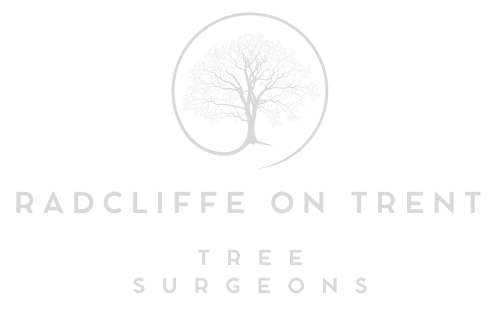Dead Wood Removal and Disease Prevention: Keeping Trees Safe
Trees are not only a vital part of our environment, but they also enhance the beauty of our surroundings and provide essential shade and shelter. However, to ensure that trees remain healthy and strong, regular maintenance is crucial. One of the most important aspects of tree care is the removal of dead wood and the prevention of diseases that can compromise a tree’s health. At Radcliffe on Trent Tree Surgeons, based in Radcliffe on Trent, Nottingham, we specialise in providing expert tree care, including dead wood removal and disease prevention. In this blog post, we’ll discuss why dead wood removal is essential and how it contributes to disease prevention, ensuring that your trees stay safe and healthy.
1. What Is Dead Wood and Why Does It Occur?
Dead wood refers to the parts of a tree that have died, including branches, limbs, or even sections of the trunk. While dead wood is a natural part of a tree’s life cycle, it can occur for various reasons:
- Age: As trees grow older, branches may naturally die off as the tree diverts its resources to more vital areas.
- Damage: External factors such as storms, high winds, or animal activity can damage branches, causing them to die.
- Lack of sunlight: In densely populated tree areas, branches lower down may not receive enough sunlight, causing them to wither and die.
Although dead wood is a common occurrence, leaving it untreated can pose risks not only to the tree but also to the surrounding area.
2. The Importance of Dead Wood Removal
Removing dead wood from a tree is essential for several reasons, particularly in ensuring the tree’s overall health and safety.
- Preventing accidents: Dead branches are weak and brittle, making them more likely to fall unexpectedly. This poses a serious risk to property, vehicles, and anyone walking near the tree.
- Enhancing tree health: By removing dead wood, the tree can focus its energy on healthy growth, which strengthens its structure and improves its longevity.
- Improving aesthetics: Dead branches can give a tree an unsightly appearance. Removing them improves the tree’s overall appearance, contributing to a cleaner and more appealing landscape.
3. Disease Prevention: Protecting Trees from Fungal and Bacterial Infections
Dead wood, if left unattended, can become a breeding ground for harmful fungi and bacteria. These pathogens thrive on decaying matter and can spread to healthy parts of the tree, leading to serious infections.
- Fungal growth: Dead wood is particularly susceptible to fungal infections, which can quickly spread to the living parts of the tree. Fungi such as honey fungus or bracket fungi can weaken the tree’s structure, causing decay and rot.
- Bacterial infections: Damaged areas of a tree can also allow bacteria to enter, leading to infections that may cause discolouration, wilting, or even the death of the tree if left untreated.
By removing dead wood promptly, you reduce the risk of these diseases taking hold and spreading, helping to protect the tree’s health.
4. Professional Dead Wood Removal: Why It’s Essential
While removing small branches might seem like a simple task, dead wood removal should always be carried out by professional tree surgeons. At Radcliffe on Trent Tree Surgeons, we use specialist equipment and techniques to ensure that dead wood is removed safely and effectively without harming the tree.
- Expert assessment: Our tree surgeons conduct a thorough inspection of the tree to determine the extent of dead wood and assess any potential disease threats. This ensures that we address the problem at its root.
- Safe removal: Removing dead branches, especially those at height, can be dangerous. Our trained professionals use the appropriate safety equipment and techniques to carry out the removal without risk to property or people.
- Disease control: If we detect signs of disease, we will take the necessary steps to prevent its spread, including pruning affected areas and advising on any treatments that may be needed.
5. Maintaining Tree Health for the Long Term
Regular maintenance, including dead wood removal and disease prevention, is essential for keeping your trees healthy in the long term. By scheduling routine inspections and removing dead wood as it appears, you can ensure that your trees continue to thrive.
- Pruning and trimming: Regular pruning helps to maintain the shape of the tree, allowing sunlight to reach all areas and promoting healthy growth. It also reduces the risk of overgrown branches becoming weak or diseased.
- Monitoring for signs of disease: Early detection is key to controlling diseases in trees. Our team at Radcliffe on Trent Tree Surgeons can help monitor your trees for any signs of distress, including fungal growth, discolouration, or weakened branches.
Conclusion
Dead wood removal and disease prevention are critical steps in maintaining the health, safety, and beauty of your trees. By taking a proactive approach to tree care, you can protect your trees from harm and ensure they remain a valuable part of your landscape for years to come. At Radcliffe on Trent Tree Surgeons, we offer professional dead wood removal and tree care services to keep your trees healthy and safe.
Call us on: 0115 647 1195
Click here to find out more about Radcliffe on Trent Tree Surgeons
Click here to complete our contact form and see how we can help with your tree needs.

